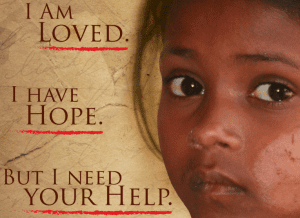Systemic Change in the Maryam Village Ethiopia where “the dead lived with the dead”. (Second in a new series of Vincentian Family Systemic Change Efforts)
 Fifty eight families, all victims of Hansen’s disease (leprosy), who begged for years in order to survive can now support themselves. They once lived in a cemetery next to a church but now they have decent homes and raise farm animals and crops. They have been transformed from living with the dead to being fully alive. “We came here a few years ago and started working with these residents of Maryam Village” said Sister Petros a Daughter of Charity. They came from different parts of Ethiopia and they were living in the cemetery next to the Catholic Church, Miriam Church. Their houses were bamboo huts next to the graves or on top of them. They were the dead living with the dead.”
Fifty eight families, all victims of Hansen’s disease (leprosy), who begged for years in order to survive can now support themselves. They once lived in a cemetery next to a church but now they have decent homes and raise farm animals and crops. They have been transformed from living with the dead to being fully alive. “We came here a few years ago and started working with these residents of Maryam Village” said Sister Petros a Daughter of Charity. They came from different parts of Ethiopia and they were living in the cemetery next to the Catholic Church, Miriam Church. Their houses were bamboo huts next to the graves or on top of them. They were the dead living with the dead.”
Graphic from World Leprosy Day 2013.
Treated worse than scavenging dogs by their society and certainly worse than the dead, the families were depressed and hopeless. Although leprosy is now a treatable disease, the stigma associated with it is still very strong. The families had been forced to leave their home towns and jobs because of their disease. They were elderly and young. They were penniless and frightened. Many were deformed. Some had no fingers or toes, others no noses or arms.
When the Sisters arrived at Maryam Village, they talked with the residents of the community, all of them. They listened to them for months and months. They showed a profound respect for the people. They involved them in a process of creating a vision for the future. The vision consisted of getting a piece of land where they could live and have homes, and gardens to grow food, and space to raise chickens and goats. It included having a school for the children. It became a shared vision of the entire Maryam Community.
The Sisters encouraged the leaders of the Maryam community to go to the local municipality officials and asked for a piece of land. They went and one of the Sisters went with them but were told, no. There was no provision in the law to assist a community like this. So, with the encouragement of the Sisters, they went again and again, and again. In fact, they went 248 times. Each time, they were told no. But on the 249th time, there was a new official and he said yes. He found a way for the government to help. They got their land.
Then, the Sisters showed the Community how to write a proposal and wrote a proposal to a German Foundation for funding for an architect, building materials and a contractor to work with the people to build homes. The project proposal was funded. The families build their homes. Then they wrote another proposal for funding to construct water well on their land. It too was funded and soon water flowed on the land.
Now each family has a home and all the families grow crops and raise small animals, which they use for their themselves or sell for clothes and household supplies . They have clean water. They are healthier. They also started a school with the help of the Sisters. The community has emerged from absolute poverty and now has the ability to live productive lives.
This profound story of hope and perseverance shows a new way to serve people who are poor. The Sisters did not ask the parishioners at Maryam Church to give food, clothes, money to the lepers or even work. They could have. But, they found a new way. They found justice.
Frederic Ozanam, the founder of the St Vincent de Paul Society said in 1833 “Charity is not always sufficient. It treats the wounds but does not stop the blows that cause them. Charity is the Samaritan who pours oil on the wounds of the traveler who has been attacked. It is Justice’s role to prevent the attacks.”
The Sisters did not consider poverty as inevitable. They listened to the people. They promoted the notion of engagement in the political process by encouraging the elders to go to the local officials and ask for justice. They sat down with the people and did a serious analysis of the reality of the situation. They came up with a holistic vision which addressed all the basic needs of people: water, jobs, housing, food, education as well as spiritual growth. They envisioned a project which would be sustainable, not a quick fix temporary solution. They implemented a systemic change project.
Contributed by: Gene Smith
Society of St Vincent de Paul
Editor’s note: And it “only” took 248 attempts to get the process of systemic change started. Also keep in minwhen starting a process. Echos of the pioneering work of other Daughters of Charity at Carville, Louisiana.
Tags: Carville, Daughters of Charity, Ethiopia, Hansen's disease, Systemic change
